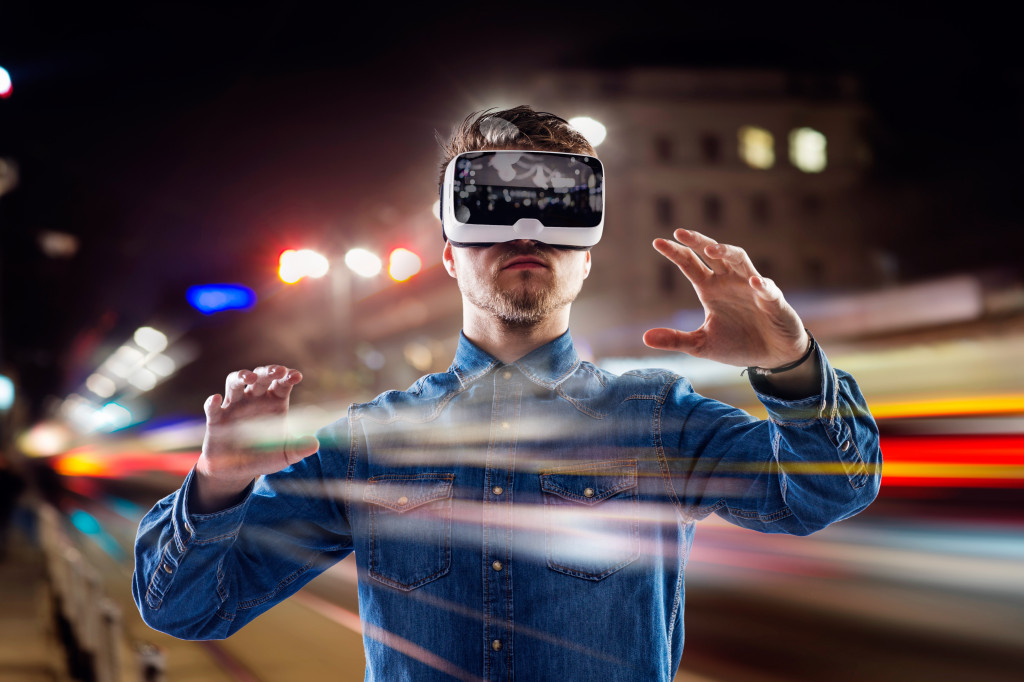Education seems like it hit its best when academic institutions created classrooms. The environment checks all the boxes and criteria for helping students learn from their teachers. With an effective formula that allows education to reach its full potential, most schools utilize the setup in every class they hold. However, academic institutions had to make changes after the world got hit with the Covid-19 pandemic. With over five million death cases worldwide, people had to stay at home to avoid contamination. Unfortunately, that means an abrupt stop in children’s education, especially the classroom setup.
The pandemic is a wake-up call to all universities and campuses that the classroom setup requires an effective alternative. Fortunately, online classes provided the solution when social distancing protocols closed classrooms. However, it gave academic institutions the chance to revolutionize beyond the classroom setup. Among the many advancements for education is virtual reality, which shows a promising sign to become the future of learning. Here are a few aspects that make it possible.
Limitless Possibilities in Simulation
The classroom setup received plenty of innovative upgrades over the years. Audio-visual equipment and content evolved to become an established part of the educational process. Online access to academic resources eliminated the burden of textbooks and note-taking. However, the classroom setup remains the preferred environment. Collaboration and interaction seem better when you can see your teacher and fellow students face-to-face, no matter how technology improves them. This situation is where virtual reality can change things.
Virtual reality (VR) in education can provide a simulation that can recreate the classroom setup. When coupled with technological upgrades, it can be similar to how academic institutions set up traditional classrooms. However, it is in personalized learning where the possibilities of virtual reality become a game-changer.
Personalized education will receive an enhancement through virtual reality. VR in itself is assistance to a person’s imagination, one of the most powerful learning tools in humanity’s arsenal. The simulated environment creates a space where students no longer have to visualize what is in textbooks but can also interact with them. They will appear in holograms in the digital classroom, a more enhanced audio-visual tool perfect for the learning experience. Virtual reality can make it possible, making it more tempting to innovate for education.

Perfection Through Trial and Error
Students can learn a lot through lessons inside the classroom. However, it is in practical projects and examinations where their skills can significantly improve. However, it can be challenging and costly to provide students with those opportunities, as much as academic institutions want to do it. Resources might end up being expensive, especially when students require access to them constantly. Fortunately, virtual reality can expose them to those resources, with the expenses limited to initial investments.
Students can now repeatedly perform their practical tasks without any challenges, which allows people to commit mistakes. Errors are often the source of lessons, ensuring improvement. However, those mistakes could mean consequences in the traditional classroom setups, particularly in wasting resources. The trial-and-error method will be possible and efficient in virtual reality, making students’ learning experiences better.
Learning in a Representation of the Environment
It can be surprising for students to learn from textbooks and exams because they will not be present in the real world. People must insert themselves in the actual environment with the tools and situations they must perform. Unfortunately, they can only do it during internship programs, which might not provide enough time to prepare them for their respective careers. Fortunately, virtual reality can create those environments, ensuring that students can practice before getting involved in the actual process. Pressure, stress, and inexperience could get in the way, affecting their performance for a company in dire need of an expert. Virtual reality can create those types of environments, making a student more well-prepared for the situation.
Creating those virtual environments that replicate real-life situations can bring out emotional reactions. Students can practice how to react to those events, allowing them to improve on them later. Once exposed to multiple situations, they can become more adaptable as soon as they begin working. Virtual reality can provide the environments necessary, making it a more promising tool for education.
For now, online classes continue to be the solution for academic institutions amid the pandemic. However, it doesn’t mean that they won’t attempt improvements. There will be innovation as long as the world remains threatened by the virus. Virtual reality is only one of those innovative routes, but it does show a promising destination. Once academic institutions can recover from the effects of the pandemic, it might not take long for them to create the experience for students. Virtual reality could change how the future generation receives education.

